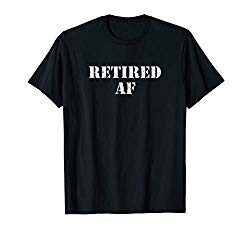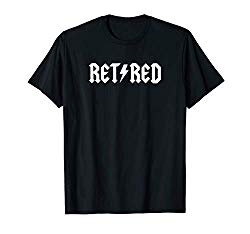FIRE and the Affordable Care Act (ACA)
Today I’m thrilled to have a guest post from Michael Dinich. Michael is a professional financial advisor and the founder of Your Money Geek. He often writes about Finance, Taxes, Politics, Renewable Energy and Geek Culture. He provides clients with the confidence and security to enjoy retirement. You can also find Michael’s work at MichaelDinich.Net.

I have written about FIRE and the health insurance before, and medical costs in general. Managing health care costs are one of the biggest challenges for people seeking FIRE. When you leave your employee sponsored plan, you are forced to navigate the various health exchanges. The blogosphere is flush with opinions on what you should do.
Today in this Guest Post, I am going to talk about how to use the ACA to reach FIRE, and what to do to hedge in the event legislation around the law is rewritten.
I have seen opinions on these matters range from purchasing programs with health cost sharing ministries to medical tourism. Call me old fashioned, but traveling oversees for a medical emergency sound more like an episode of The Simpsons than sound financial advice. Health cost sharing ministries are not health insurance, and consumers do not have the same levels of protection with these programs as they do with insurance.
The most popular form of health insurance for those leaving employer-sponsored coverage is to purchase insurance on the exchange. (If you are not familiar with the ACA, check out my guide on hacking the ACA) Some people, such as Accidental Fire, have expressed concerns with the long-term viability of the ACA. I can understand the concern; the bill is politically unpopular and confusing, which has deemed it a winner and a loser at the same time.
Note: As a producer of content, I feel as though I have a responsibility to remove any political bias from this content. The ACA is the current law of the land. If you are not happy with it, please write your elected officials. I cannot change the law.
Firstly, a little perspective: private health insurance was available prior to the ACA. It was fairly expensive but not insurmountable for people in their 50’s and early 60’s. People who planned ahead for early retirement were able to purchase policies. So, the good news is, if the government repeals the ACA in its’ entirety, we should revert to pricing and policies that were previously available. (Adjusted for inflation, of course.)
Secondly, if the government repeals the ACA, change is going to take time. The ACA is a massive piece of legislation which affects not just insurance, but also taxation. The insurance products are regulated by the states, and it would take the states time to adjust to changes in federal mandates and incentives. Additionally, the insurers would need time to re-price products and get new product offerings approved by the state. I cannot promise anything, however, I feel fairly confident in thinking that any program which impacts the IRS, each state, and insurers will not happen overnight.
4 Steps To What Should You Do
1. If the ACA would be a benefit to you and your family, you should structure your finances in a way to maximize your benefit. The ACA uses modified adjusted gross income to determine the amount of your Premium Tax Credit. If you’re worried about the repeal of the law, use the current money savings to build an emergency cushion.
2. Contribute the maximum to your Health Savings Account (HSA) each year. Funding your HSA will reduce your taxable income. More importantly, the funds in the HSA will grow, and can be used to purchase health insurance. Many HSA custodians offer options to invest your HSA in your choice of various investments. Should you build up your HSA over a period of several years and invest wisely, you will now have a renewable income resource to help pay for or reduce future insurance premiums on a tax-advantaged basis (some restrictions apply).
3. Model some price and political instability into your calculations for Financial Independence. Individuals that are part of the Lean Fire movement may find increases in insurance premiums or even inflation in health care costs exceed their estimates and they may not have sufficient assets. Many insurers invest their cash reserves into various investments, and a downturn in the market could cause losses in the insurers’ portfolio, which will oftentimes cause insurers to raise premiums. Obviously for the investor, particularly one who is Lean Fire, getting hit with an increase in insurance costs when their portfolio is down in value can be upsetting, if not detrimental.
4. Get healthy! Easier said than done, I realize. If you are committed to FIRE, then you should also be committed to becoming as healthy as possible. Now, you don’t need to be as healthy as Accidental Fire and bike and run a million miles a day, but let’s face it: if you put on some weight, losing that weight and hitting the gym a few times a week will improve your health and reduce health care costs. (AF Comment: It’s a million a year, not a day, I’m not totally crazy. …wait…)
Hedging Against the Fall of the ACA
It’s going to be helpful to have a side hustle or some form of business income in this event. There is a type of health insurance that was available prior to the ACA, survived the ACA, and theoretically should survive the ACA’s fall: partially self-funded health insurance. There are a few different variations of the programs, so I will just touch on the concepts briefly.
In a partially self-funded plan, the employer (you if you’re the business owner) chooses an amount of money that you feel comfortable self-insuring. The intention is that the policy is purchased to provide benefits after the self-insured amount is exhausted. Think of it like having an extremely high deductible. Each year when you pay premiums, a portion of the premium goes into a reserve account. In the event you require medical care, the funds are drawn on the reserve account. Once the reserve fund is depleted, the insurance policy kicks in. If the funds in the reserve account are not used, the funds can be returned to you, or used to offset the following years’ premium.
Note: These programs can be used in combination with an HSA.
There are some advantages to a partial self-funded plan such as:
a) they are exempt from certain provisions of the ACA; and
b) the coverage can be medically underwritten.
Since the policy can be medically underwritten, a healthier individual may see lower rates of insurance as compared to an ACA policy.
The disadvantages to these plans are:
a) they are exempt from some of the provisions of the ACA; and
b) they can be medically underwritten.
If your health is compromised, you may not qualify or see a premium reduction. There is no mandate that these programs will accept you as a policy holder, and the policies are not guaranteed to be renewable.
Why Haven’t I Heard About This?
Simple answer: it’s complicated and boring! No one likes talking about health insurance, and it’s certainly not as sexy as travel hacking. There are numerous variables and exceptions: policies vary by state, and often by county. These plans are not for the do-it-yourself crowd. A few things are necessary, such as the requirement to hire a third-party administrator (not as scary as it sounds) and some choices need to be made about what coverage options you feel comfortable with.
Additionally, the FIRE crowed is a bit different than the average consumer of health insurance. If you are reading a blog such as Accidental Fire, it’s clear you’re taking a more active role in your financial future. While most advisors would not feel comfortable recommending plans with such high deductibles to the average consumer, an educated consumer who understands the risks and benefits and is willing to work to optimize their benefits may see a 30% reduction in insurance costs.
The Approach
While pursuing FIRE, max out your HSA every year. Try to avoid using the money for health care. The goal is to build up the HSA account as much as possible.
If you plan on leaving your employer, structure your income to maximize your benefit under the ACA. Keep funding your HSA each year if possible. Focus on your health and do everything possible to get and stay healthy. The key is to build a sizable cushion in the HSA.
Once you have built a decent balance in the HSA, you have the option to go with traditional insurance or partially self-funded insurance if the ACA is repealed. If you decide to choose the partially self-funded plan, set your “at risk” amount to less than you have saved in your HSA. Each year that you do not have a claim and are healthy, keep funding the HSA, and increasing your “at risk” amount. Each time you increase the amount of money that you deem “at risk”, your insurance premiums are reduced accordingly. Be sure to set the difference in insurance policy costs aside for your emergency fund.
The goal is to build up your balance in the HSA. If you have been following this approach for a number of years, you may find that you have enough money accumulated in your HSA that you can use the income from the HSA investments to reduce or offset traditional insurance premiums.
The Bottom Line
There may be other options outside the ACA that are worth exploring. Finding the right insurance coverage may take some piecing together of different and moving parts, but once you discover how the pieces fit together, insurance will be one less thing you have to worry about.
Thanks Michael for this incredibly useful information! I honestly did not know much at all about partially self-funded plans. I wrote about my adventure in minor knee surgery a little while ago and as regular readers know, healthcare worries are the #1 reason I stay part time at my job even though I’m financially independent. Knowledge is king, and this information will allow me to consider new options in the future. If you’d like to learn even more information from Michael about the ACA, you can listen to his recent episode on the MoneyPeach Podcast.










































We are on my wife’s employer sponsored plan now. It’s working well, but she is planning to retire in about 2 years. We’ll go with ACA and see what happens next. I was nervous about ACA going away, but it looks like it’ll be here for a while longer.
I haven’t heard of partially self-funded plan before. Thanks for sharing. This will be another option if ACA is not available.
This has been one of my greatest fears about retiring early… medical expenses. While i still feel there aren’t any perfect solutions yet, this definitely has me thinking. We only just got access to the HSA last year, and have definitely put a lot of our focus on that so far, i appreciate your other ideas.
Self funded plans are an interesting concept. We also are on my wife’s insurance. She may eventually quit and then we will be facing this issue soon.
Doc G
Self-funded and Partially Self-Funded plans are a bit different. When speaking with a professional make sure you get the plan you are looking for, unfortunately, many professionals will just give you what you ask for.
i always try and tell friends that you should save up at least the full deductible for your family for a year and don’t touch it for anything except that purpose. did i read correctly that the max cost for the year was about 9% or magi?
I’m fairly far away from actually walking away from my job so who who’s what the healthcare landscape will be like then. If I do ever decide to pursue a career with no employer sponsored health plan this could come in handy! This is great information though as I’ve never even heard of the self funded option. Thanks for sharing it with us!
We are early retired and have used the ACA through Covered California since it went live in 2014. It is the best tax break for us, better than it seemed it would be when I read the law. We have inched up our income to 53K now and our bronze plan for 2 people is $2.42 per month on a Kaiser bronze plan. Our subsidy is $1723 per month. We are healthy and rarely go to the doctor — in fact we’ve been on Kaiser for our second year now and my husband has not even met the doc (not advised, but hey, he’s a guy!). The maximum out-of-pocket cost is $6000 per person and $12000 per family. That out-of-pocket cost is the same whether you get a bronze, silver, gold or platinum plan. That makes the bronze the best value because we pay nearly nothing and get nothing, as long as all goes well. If we get sick or injured, we are probably going to need the 6K either way, so we see that as an item from our emergency fund or Roth. We failed to get an HSA, but I understand you can get them even without W2 income, before Medicare. It’s on my “to do” list.
This is an awesome article and I’m impressed you got Michael Dinich as a guest. Thanks to you both!
Susan,
Thank you so much for sharing your experience. Here is one thing most people do not realize about the ACA, if you can keep your MAGI below 250% of the poverty level than Silver plans are modified to be a better deal.
The ACA is a massive law, I wrote a guide from my site, and it was over 3k words, and I barely dented the bill. Let alone touched on all the various exemptions, caveats, and interactions between multiple programs.
We are ~10-15 years out from FI, and don’t expect to fully retire then, so I’ve more or less left the health care part of the equation alone for now. Here’s to hoping things are cleared up well before we need to make a decision about those sorts of things.
You and your husband are planning so far ahead and doing everything right – success is inevitable for you guys. Even with the crazy future of healthcare.
Thanks for the post!
A few thoughts on this paragraph:
“Firstly, a little perspective: private health insurance was available prior to the ACA. It was fairly expensive but not insurmountable for people in their 50’s and early 60’s. People who planned ahead for early retirement were able to purchase policies. So, the good news is, if the government repeals the ACA in its’ entirety, we should revert to pricing and policies that were previously available. (Adjusted for inflation, of course.)”
I’ve been buying individual health insurance for nearly 20 years now. Long before the ACA was in the cards, premiums in my state (w/my insurer) were increasing at 15%/year. (Yep, that’s not a typo.) Industry analysts say the ACA has slowed the runaway growth in healthcare costs. If the ACA is repealed, private health insurance will NOT revert to what was available in 2005 or even 2010. It will be much, much more expensive, and not because of the ACA. (Although the ACA would probably get the blame.)
Also, before the ACA, there was no guarantee that you could get coverage, and there were no protections against your insurer dropping coverage if you developed an expensive condition like cancer. When you applied for coverage, you filled out a long form disclosing all of your health information. Some insurance cos had departments dedicated to uncovering reasons for refusing treatment to their insurees. One example that sticks in my mind: a 30-something woman hadn’t disclosed that she’d had acne as a teenager. She developed an autoimmune disease and the company denied her treatment because there’s a connection between acne and autoimmune diseases. The woman said, I would have written down the acne if it occurred to me, but I hadn’t thought about it in a dozen years–I thought all teenagers had acne.
Remember job lock?
Great points and great comment!
But, what does it cost? Like, what are people currently paying at various ages through the exchanges, prior to subsidies. Just a rough idea is all I need.
There’s a big difference between planning for premiums and adding some cushion for conservatism if the numbers are $5k a year, vs $15k, vs $25k. Susan @ FI Ideas says she and her husband have income of $53k/year and a subsidy of $1723 a month? That’s a subsidy of $20,676 per year. It’s the closest thing to a number I see in here, and it’s (hopefully?) wrong.
Look up the Retirement Manifesto Blog and Mr. Money Mustache, those two did great breakdowns of actual costs for their circumstances. Of course it matters what state you’re in too, but sometimes the differences aren’t that big from my understanding.